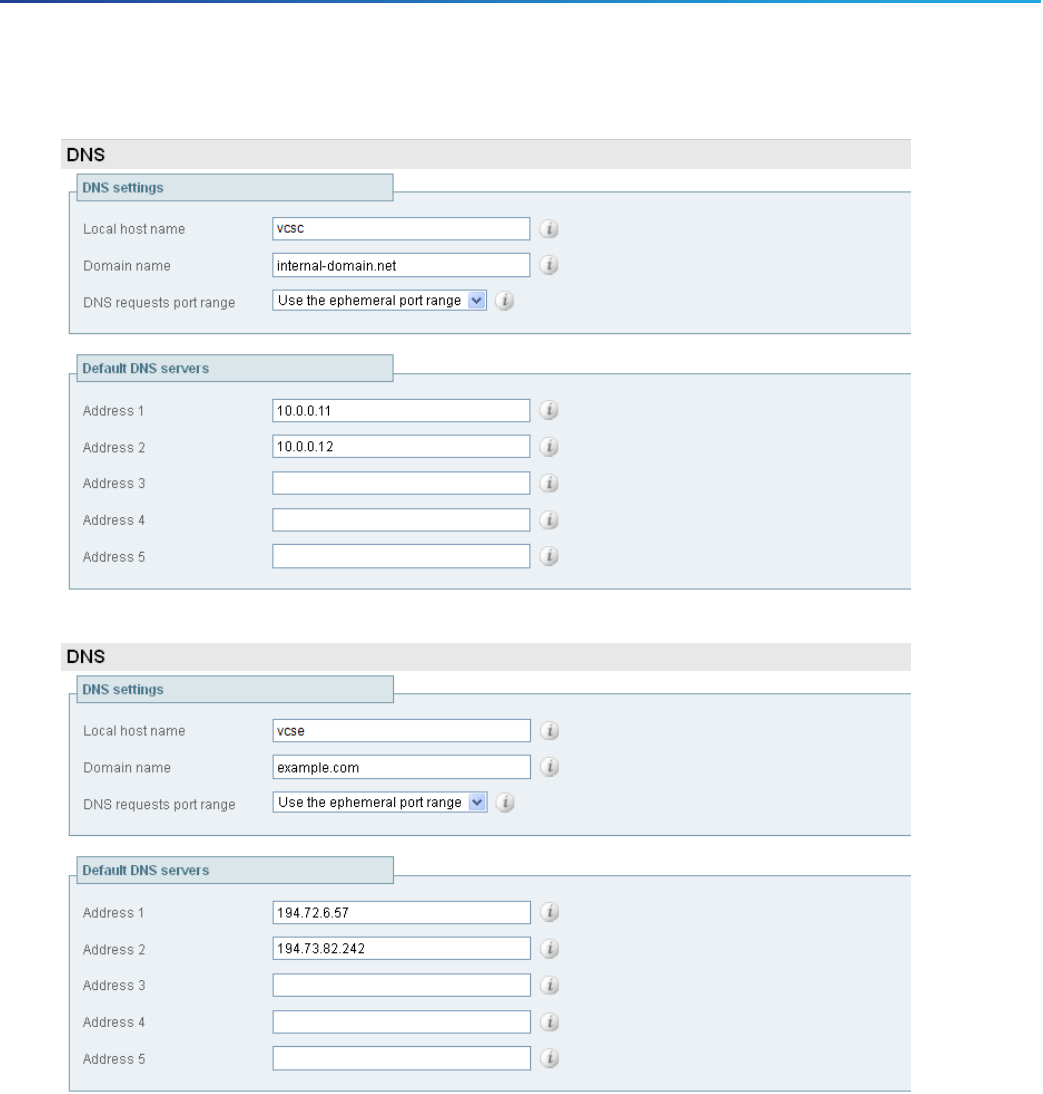Manual
Table Of Contents
- Preface
- Introduction
- Process Summary
- Prerequisites
- Run the Service Setup Wizard
- VCS System Configuration
- Routing Configuration
- Pre-search Transforms
- Search Rules
- Task 8: Configuring Transforms
- Task 9: Configuring Local Zone Search Rules
- Task 10: Configuring the Traversal Zone
- Neighboring Between VCS Clusters
- Task 11: Configuring Traversal Zone Search Rules
- Task 12: Configuring the DNS Zone
- Task 13: Configuring DNS Zone Search Rules
- Task 14: Configuring External (Unknown) IP Address Routing
- Endpoint Registration
- System Checks
- Maintenance Routine
- Optional Configuration Tasks
- Appendix 1: Configuration Details
- Appendix 2: DNS Records
- Appendix 3: Firewall and NAT Settings
- Appendix 4: Advanced Network Deployments
- Obtaining Documentation and Submitting a Service Request
- Cisco Legal Information
- Cisco Trademark

VCS Control has a fully qualified domain name of vcsc.internal-domain.net
VCS Expressway has a fully qualified domain name of vcse.example.com
Task 5: Replacing the Default Server Certificate
For extra security, you may want to have the VCS communicate with other systems (such as LDAP servers, neighbor
VCSs, or clients such as SIP endpoints and web browsers) using TLS encryption.
For this to work successfully in a connection between a client and server:
■ The server must have a certificate installed that verifies its identity. This certificate must be signed by a
Certificate Authority (CA).
■ The client must trust the CA that signed the certificate used by the server.
21
Cisco VCS Expressway and VCS Control - Basic Configuration Deployment Guide
VCS System Configuration










